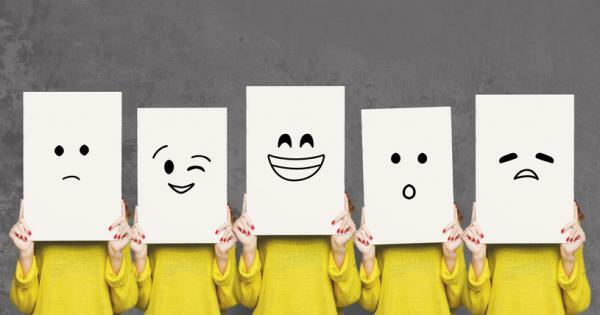
Do you remember the movie called "Inside Out"? In it, five characters appeared and each one represented an emotion: anger, joy, fear, disgust and sadness. These are 5 of the basic emotions that exist in the human being. The pioneering psychologist in the study of emotions, Paul Ekman, added to these five a sixth: surprise.
Eckman, in addition to providing a definition for each of these emotions, associated the different facial expressions with them. He also took into consideration the micro-expressions, which are small, automatic, brief and unconscious facial expressions that help to find out the real state of mind of the person.
Keep reading Online Psychology to understand well the Paul's theory of emotionsEkman, what each of the emotions in the theory consists of, see the summary of the book "The face of emotions" by the psychologist and know what are the different facial expressions that could help us to know what emotion the other is feeling person.
Paul Ekman's theory of emotions includes 6 universal emotions. Next, we will see what they are:
- Go to: arises in aversive situations or that generate frustration. It is an activation of the body in preparation for the fight against the threatening situation or the flight from it. However, on many occasions it appears constantly, causing problems at a social, work, couple and even physical health level. According to Paul Ekman's theory of basic emotions, anger is associated with heart problems. In this article, we tell you how to control anger.
- Disgust: the origin of the feeling of disgust is to protect ourselves against foods that could be toxic. However, on many occasions, we have that feeling of rejection of a food without it being bad for the body. In addition, not only some foods can cause us disgust, also certain smells, tactile sensations or images can create this rejection in us.
- Afraid: its origin is clearly our protection against dangers. It is an activation of the body that prepares us to flee from a potentially dangerous situation. However, as in the others, on many occasions we have irrational fears, such as phobias, in which the danger is not real or is very unlikely. Discover how to overcome fears.
- Joy: another of Paul Ekman's emotions. It is a pleasant emotional state in which the person evaluates a situation as positive. In addition, there is usually a low level of anxiety, good expectations about the future, and high levels of energy and motivation during this emotional state.
- Sadness: one of the 6 emotions of Paul Ekman. Contrary to joy, it is a decline in the general state of mind. Energy levels are low, there is little motivation, and the outlook on the present and the future is negative.
- Surprise: Paul Ekman's atlas of emotions describes The surprise as a physical and cognitive reaction that one has before an unexpected event or that did not enter the mental schema of the person.
Now we know what Paul Ekman's emotions are. In this article, you will find more information about the 6 basic emotions according to psychology.
The Face of Emotions by Paul Ekman, is one of the books that explains the different facial expressions associated with an emotion. With this, what is intended is that the reader learns to distinguish the mood from others and, therefore, adapt better and learn to better hide your mood.
The book of the face of emotions by Paul Ekman delves into the world of microexpressions and explains that these are universal, regardless of the time, country, culture, language, etc. We all have the same expressions for joy, the sadness and the rest of the emotions already mentioned. These only last less than a second on many occasions.
In addition, the book helps you analyze when you have a certain emotion and how you express it. Likewise, he also explains how emotions, according to Paul Ekman, help us to quickly classify different vital events in our lives.
Finally, Paul Ekman's theory of emotions explains how to make certain situations stop affecting us both emotionally. It is not about stopping feeling anything, since the author explains the importance of learning to live with our emotions. In short, it is about learning an emotion for a certain situation in which our emotional reaction was being useless, for example, in the case of phobias. In the same way, it teaches us to have more temperance in different situations.
According to Paul Ekman's theory of emotions, different movements occur in our face in accordance with the emotion we are feeling. Let's see what are the facial expressions of primary emotions according to Paul Ekman:
- Go to: it is common to frown and purse the lips. Also, the eyes look brighter.
- Happiness: wrinkles appear at the outer end of the eye, known as crow's feet, the cheeks rise and the ends of the lips also rise, which is reflected in more closed eyes.
- Sadness: the eyelid is more drooping, the mouth is straight or down, and sometimes the brow is furrowed and raised.
- Disgust: the nose is wrinkled and the upper lip is raised.
- Surprise: the eyebrows rise, the eyes open and the mouth also.
- Afraid: the upper eyelids are raised to the maximum and the lower ones are taut. The eyebrows are raised and close together. The lips are drawn back and the cheeks shrink.
These facial expressions of Paul Ekman's basic emotions can be longer or shorter in duration. Thus, both in the facial expressions and in the micro-expressions the same gestures would be produced and the only thing that will vary is the duration of the same.
This article is merely informative, in Psychology-Online we do not have the power to make a diagnosis or recommend a treatment. We invite you to go to a psychologist to treat your particular case.


